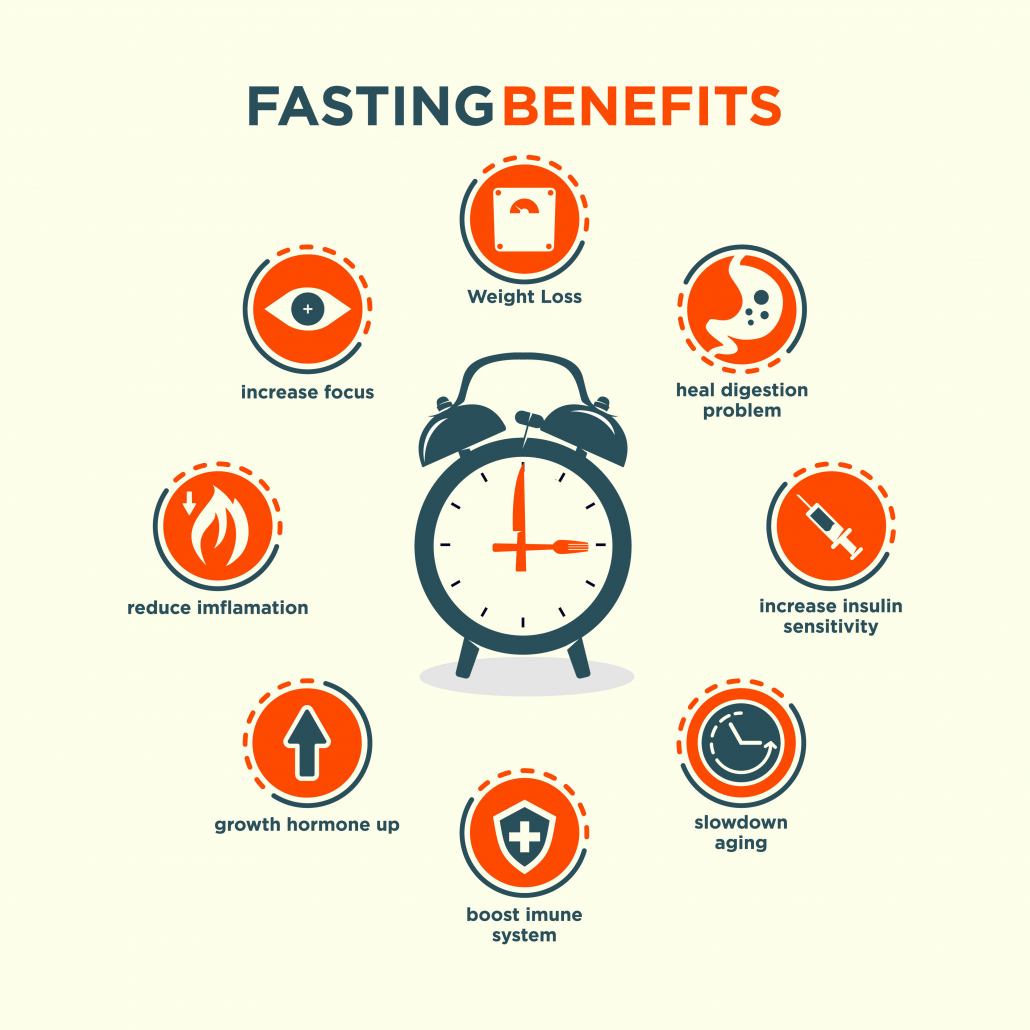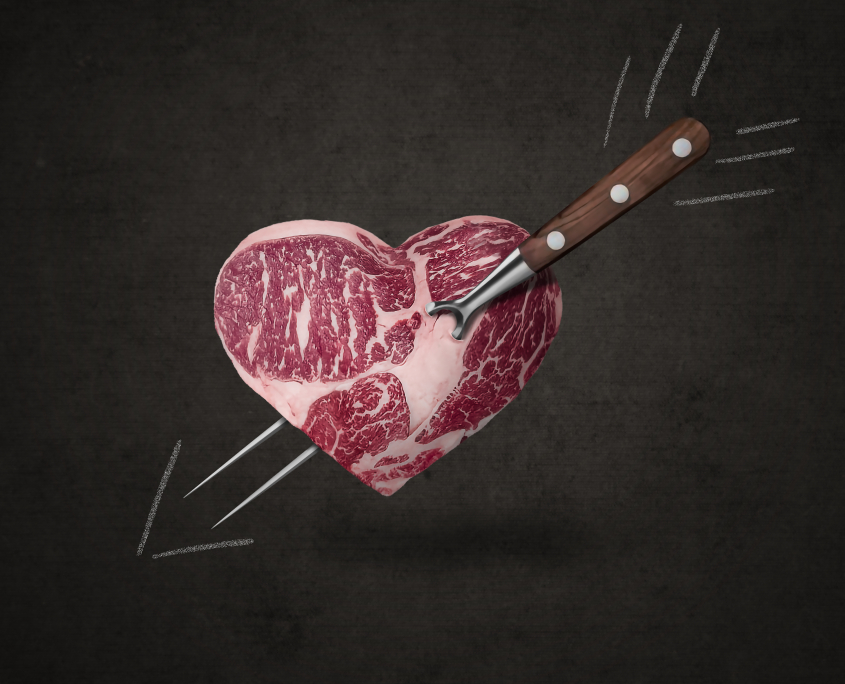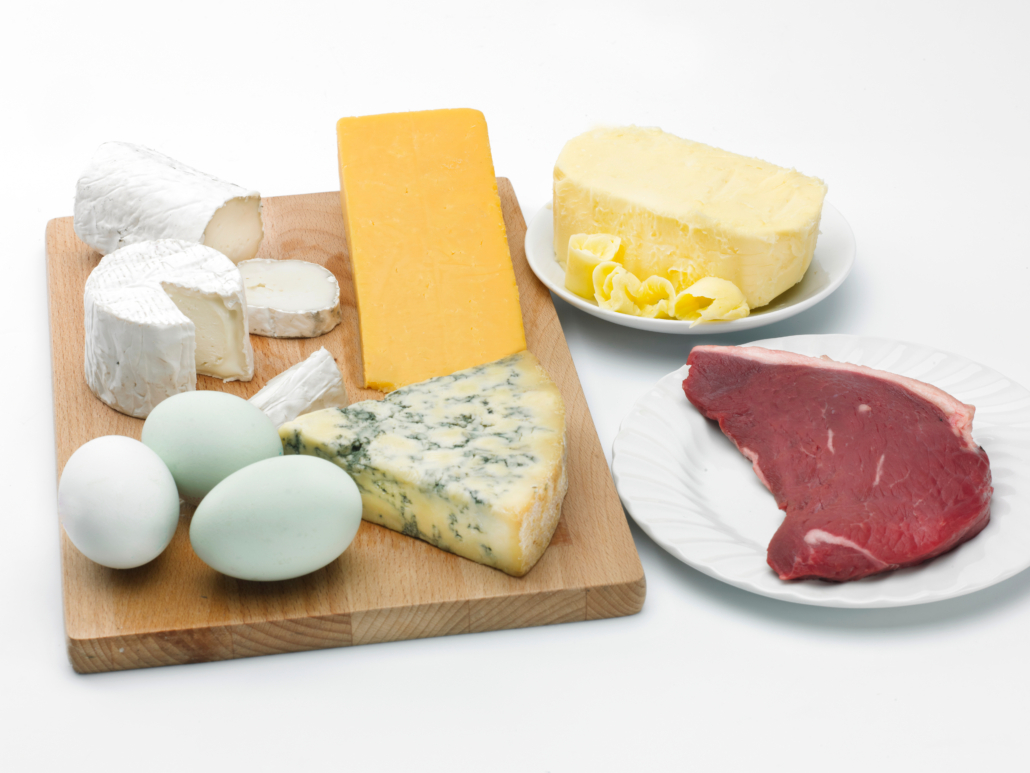We include products in articles we think are useful for our readers. If you buy products or services through links on our website, we may earn a small commission.
The Best Intermittent Fasting Strategies for Women

Table of Contents
- What is Intermittent fasting?
- Why Fast?
- Benefits of Intermittent Fasting for Women
- Intermittent Fasting May Affect Men and Women Differently
- Intermittent Fasting and Insulin Sensitivity in Women
- Intermittent Fasting and Keto for Women
- Keto and stem cells when fasting
- Intermittent fasting strategies for women
- The Bottom Line About Intermittent Fasting and Women
Intermittent fasting offers many proven health benefits for both men and women, but women’s bodies are different and may benefit from different IF strategies.
This article will look at what intermittent fasting is, why women respond to IF differently than men, and how women can safely practice IF.
What is Intermittent fasting?
Intermittent fasting (IF) means cycling between daily periods of not eating and windows for eating.
There are lots of ways to practice IF, which we’ll get into later.
When done properly IF has been shown to:
- regulate blood glucose
- control blood lipids including cholesterol and triglycerides
- reduce the risk of coronary disease
- manage body weight
- help you gain (or maintain) lean mass
- stimulate human growth hormones
- activate stemcell production
- reduce the risk of cancer, and more
Why Fast?
For many people, fasting might sound like a new diet trend. But the truth is humans have been practicing fasting for as long as we’ve been on this planet.
During the vast era when humans were hunter gatherers, what we popularly call cavemen (and women), our ancestors fasted out of necessity. Food simply wasn’t available all the time. After a hunt, we feasted, then fasted until the next successful hunt.
However, fasting isn’t always out of necessity. The health benefits of fasting have been known for thousands of years. The Greek philosopher Plato believed that fasting helped him achieve better physical and mental energy. Hippocrates, the father of modern medicine, recommended fasting for many different health issues.
Clearly, fasting is not new. And thanks to our evolution, our bodies have been trained not only to handle fasting, but to thrive on it.
Intermittent fasting is a safe and easy way for women to receive the benefits of fasting regularly.
Benefits of Intermittent Fasting for Women

Supports Fat-Burning and Weight Loss
When in a fasted state, your body is not getting energy from food so it has to look for alternative sources. After burning up stored glycogen (carbohydrates), your body starts to break down stored fat–that spare tire or big bottom–into molecules called ketones. Ketones replace glycogen as fuel for your cells. As your body becomes fat-adapted, it develops better metabolic flexibility and increases fat burning. Studies have shown that intermittent fasting can help fat and weight loss, and may reduce obesity.
Supports Cellular Renewal and Repair
Research has shown that fasting supports the process of autophagy. During autophagy, your body breaks down and destroys old, damaged, and abnormal cells and recycles them for energy. This cellular “spring cleaning” leaves room for your body to create new and healthy cells. It also supports cellular repair and regeneration, reduces the development of abnormal cell growth, and keeps your cells and tissues healthy.
Increases Stem cell Production
When you fast, you are essentially resetting your immune system by allowing your body to switch into repair mode. Stem cells increase because they are the primary repair system in your body. These cells work by morphing into many different types of cells, depending on which parts of your body need repair. Fasting has been shown to increase stem cells in the intestines, muscles, and brain while preserving the long-term ability for stem cells to regenerate independently. The way this works is pretty amazing. When fasting, our bodies greatly reduce our energy expenditure by rapidly shrinking tissues, organs, and populations of different cells in your blood including a whopping 28% decrease in white blood cells.
Reduces Inflammation
Chronic inflammation is the root cause of most chronic disorders and diseases. Fasting can lower the production of inflammatory pathways, reduce inflammatory activities, and reduce chronic inflammation. As a result, it may improve your physical and mental health and reduce your risk of disease.
Improves Energy
Becoming fat-adapted and experiencing ketosis through fasting can improve your energy. This improvement is due to an increase in mitophagy–a process of breaking down old, damaged, or dysfunctional mitochondria and replacing them with new and healthy mitochondria. Mitochondria are the energy factories in all our cells. Improving mitochondrial health can increase cellular energy and support energy efficiency.
Supports the Gut
Taking a break from eating offers a break for your gut as well. Digestion takes a lot of energy. When fasting, your body can spend this energy on tissue repair. Fasting supports intestinal stem cell production that supports your recovery from leaky gut syndrome and improves homeostasis.
Improves Insulin Sensitivity
Insulin is a hormone that controls the amount of sugar in your system. Frequently consuming carbohydrates (sugars) increases insulin resistance and inflammation. Insulin is a hormone that helps deliver glucose (the end product of carbohydrates) to your cells. When there’s too much sugar in your bloodstream your cells stop responding to insulin, essentially shutting the door on sugar. We call this “insulin resistance” or “pre-diabetes.”
When your cells stop responding to insulin, your body secretes even more insulin, bullying your cells to open their doors to let in more sugar. If you continue eating sugar the insulin producing cells in your pancreas will burn out. Without the ability to make insulin your body gets toxically overwhelmed by glucose, and you have diabetes—a debilitating and deadly disease. IF can increase the ability of your body to properly use the glucose in your blood.
Lowers the Risk of Chronic Disease
Fasting reduces chronic inflammation in your body. As a result, it may also reduce the risk of chronic disorders and disease, including diabetes, heart disease, metabolic problems, obesity, hormonal issues, infertility, autoimmune diseases, and cancer.
Improves your relationship with food
Mindless snacking, emotional eating, binge eating, overeating, and craving unhealthy, sugary junk food is a common problem in our modern world. When you begin intermittent fasting, you may notice that you stop relying on food as a crutch when you’re bored, stressed, or otherwise emotional. Fasting may help to repair food addictions and reset your neurochemistry. While practicing IF you will notice that you become more mindful when it comes to food.
Boosts Human Growth Hormone
A recent study of 200 participants showed that fasting for a single twenty-four-hour period increased HGH by 2000% for men, and 1300% in women HGH is essential for building, maintaining, and repairing healthy tissue in the brain, bones, and other organs, while speeding up healing after injury and repairing muscle tissue after exercise. HGH builds muscle mass, boosts metabolism, and burns fat. Because HGH naturally drops as you age, it becomes even more important to take dietary steps to maintain and increase your HGH levels.
HGH has been shown to slow down the aging process of the skin, reducing sagging and wrinkles.
Increases BDNF, “Miracle-Gro for your brain”
BDNF is short for Brain-Derived Neurotrophic Factor, a naturally occurring growth hormone responsible for neurogenesis—the creation of new neurons. That’s why Harvard Neuropsychiatrist, John J. Ratey deemed it, “Miracle-Gro for the brain.” Increased levels of BDNF through intermittent fasting are associated with better moods, higher cognitive ability, more productivity, and better memory while decreasing risks of neurodegenerative diseases like Alzheimer’s, dementia, and Parkinson’s.
Exactly why BDNF gets a boost from fasting isn’t totally understood, but researchers believe it has to do with the way BDNF helps to rapidly form new neural networks. A network is formed when nerve cells in the brain fire together, forming a new thought, memory or skill. We form these networks very quickly in emergencies when we’re kicked into fight of flight mode. When we’re fasting, we are in a controlled state of threat. This same healthy dose of stress that stimulates stem cell production, HGG, and autophagy is also likely the trigger for boosting BDNF.
Intermittent Fasting May Affect Men and Women Differently
While intermittent fasting can benefit both sexes, it may affect men and women differently. The discrepancies may be the result of hormonal differences. Besides influencing insulin, norepinephrine, and HGH levels, intermittent fasting may affect female sex and hunger-hormones in specific ways.
Intermittent Fasting and Reproductive Hormones in Women
Women are more sensitive to calorie restriction and restrictive, low-calorie diets than men. Calorie restriction affects the hypothalamus and the gonadotropin-releasing hormones (GnRH). GnRH is in charge of releasing two important reproductive hormones, the luteinizing hormone (LH) and the follicle-stimulating hormone (FSH). Disrupting these hormones can lead to a variety of hormonal issues, including irregular periods, amenorrhea, infertility, reduction in ovary size, and decreased bone density.
Intermittent Fasting and Disordered Eating in Women
Intermittent fasting may disrupt the balance of ghrelin, the hormone that tells you you’re hungry, and leptin, the hormone that makes you feel satiated after eating. Disruptions in these hormones may lead to more cravings, increased hunger, and a lack of satiety. While this may become a problem in both men and women, disordered eating, emotional eating, and eating disorders, such as anorexia, bulimia, and binge eating tend to affect women more.
If you have recovered from an eating disorder it is important that you talk with your healthcare provider before starting an intermittent fasting protocol. If you are currently dealing with an eating disorder, we recommend against intermittent fasting.
Intermittent Fasting and Insulin Sensitivity in Women
While increased insulin sensitivity is a common benefit of intermittent fasting, it may not be the case for all women.
According to a randomized control trial published in the International Journal of Obesity, intermittent fasting resulted in 29% lower insulin levels and 19% decreased insulin resistance in obese and overweight female participants. A 2014 review published in Translational Research has also found that intermittent fasting may lower insulin levels by 20 to 30% and blood sugar by 3 to 6% in those with prediabetes.
However, a 2005 study published in Obesity Research found that alternate-day fasting for 22 days resulted in worsened blood sugar in non-obese women. But in men, it did not. It seems that women with insulin resistance, prediabetes, and diabetes may experience increased insulin sensitivity from intermittent fasting. However, women without insulin resistance may experience hypoglycemic stress.
These differences between men and women do not mean that intermittent fasting is not right for women. Women can still experience the benefits of intermittent fasting. However, it’s likely that women will benefit from different IF strategies than men.
Intermittent Fasting and Keto for Women

One way for women to reduce the potential for hypoglycemic stress and related reproductive hormone imbalances is by combining IF with a ketogenic, or high-fat low-carb (HFLC) diet variation.
If you’re fasting on a carb-based diet, you’ll struggle with cravings, lack of focus, low energy, and irritability. When you break the fast, you’ll likely want to binge on a ton of carb-heavy foods, spiking your blood sugar, feeling fatigued, and lacking focus. You’ll be stuck on the low to high blood sugar seesaw. It’s this blood sugar seesaw, and not the IF, that is likely responsible for hormonal imbalances.
Ketones over carbs
When your body is using fat as its primary fuel source, most of your cells get their energy from ketones rather than glucose. Fat digests much more slowly than carbohydrates, and ketones pack more energy per unit than glucose. On an HFLC diet, you provide your body with a sustained and superior fuel source.
Your few cell types that can’t use ketones are fed by glucose created on-demand in your liver. This means that when you combine IF with a HFLC diet, your blood sugar never drops to a point where you get hunger cravings, and never spikes to a point where you lose focus. Ketones are also effective at suppressing ghrelin, the hormone that makes you feel hungry.
The ketogenic diet and fasting offer similar benefits, including reduced inflammation, improved fat burning, better cellular repair, improved insulin sensitivity, and lower risk of disease. Intermittent fasting and keto can go hand in hand to support each other and increase their complementary benefits.
Keto and stem cells when fasting
When you enjoy a keto feast at the end of a fasted period, you are fertilizing the vast crop of new cells with fat–the healthiest, most potent fuel available.
When you combine IF with keto, you’re getting rid of tons of damaged cells—especially those damaged from the bonding of sugar molecules in the destructive process called glycation. At the same time, your body is erupting with fresh, fat-fueled cells!
Lab tests on mice show fasting to result in major reductions in the incidence of lymphomas and tumors. The mechanism at work here is the decrease in glucose and insulin—if you’re not eating sugar, your body isn’t producing insulin.
Fasting along with keto starves cancer cells that rely on sugar while promoting short-term atrophy and cell death in a wide range of tissues and organs including the liver and kidneys.
This controlled atrophy and cell that occurs during IF triggers a period of cellular growth and proliferation. Replenishing these growing cells is crucial. But, and this is a big BUT, if you eat high carb, and other cancer-causing molecules when feasting at the end of a period of fasting, studies show that you actually increase cancerous activities and pre-cancerous lesions especially in the liver and intestines.
A high-fat low-carb diet is not only the best way to get the greatest health benefits out of IF, it’s also the best way to protect yourself against the possibility of doing your body harm.
Intermittent fasting strategies for women
Simple Fast
Starting with a Simple Fast is the best strategy for anyone who is new to intermittent fasting. It is also a great choice if you have hypoglycemic issues. It’s a fantastic approach to reduce late-night eating, emotional eating, and food addictions. The Simple Fast involves a relatively short–12-hour–fasting window. This window includes your overnight sleep. You simply stop eating after dinner and don’t eat until the next day at breakfast 12 hours later.
Brunch Fast
If you are doing well with the Simple Fast, you may want to extend your fasting window to a Brunch Fast. This fast includes 14 hours of fasting window where breakfast becomes more of a late breakfast or brunch.
Crescendo Fasting
As you get used to intermittent fasting, try stepping up your game to Crescendo Fasting. It is less demanding on female bodies, yet still helps to lower inflammation, burn fat, and increase energy.
Crescendo fasting is an alternate-day strategy. You only IF on 2 to 3 non-consecutive days of the week. During non IF days, you eat normally.
For example IF on Tuesday and Friday, or Monday, Thursday, and Saturday. On your fasting days, aim to fast for 16 hours and eat your meals within an 8-hour window following the 16:8 rule.
Intermittent Feasting
When most people talk about intermittent fasting, there’s a lot of emphasis on not eating. However, our eating window is just as important. While the periods of not eating create the potential for many of the health benefits we get from IF, calorie restriction is not the goal of IF. And it can lead to hormone imbalances for women, especially if you IF on a normal carb-based diet.
Feasting (the eating window) is the time to nourish your body with nutrient-dense foods. Healthy animal fats and proteins will balance your hormones, reduce inflammation, improve your immune system, support cellular growth, aid lean tissue development, and support emotional health.
I recommend that you nourish your body with anti-inflammatory, nutrient-dense foods including healthy fats, grass-fed butter and ghee, grass-fed beef, pasture-raised and eggs, wild-caught fish, and wild game.
For women, it’s also important to pay attention to your menstrual cycle. It may be best for you that when you’re ovulating (days 12 to 16), and during the week before your period (days 22 to 28), you put the fasting aside and only feast. Feasting during these times helps to support the increase in estrogen and progesterone taking place in your body.
However, on a HFLC diet, you may not need to stop fasting. This is because the healthy fats and cholesterol you get from nutrient-dense animal foods provide the building blocks for your reproductive hormones.
The Bottom Line About Intermittent Fasting and Women
Aside from combining IF with an HFLC diet, modified versions of intermittent fasting are usually the safest and most beneficial for women. It’s important to consider that fasting is only a tool. It’s best to approach IF in the context of your overall health goals, and while paying close attention to the needs of your body.
If you have an eating disorder, are pregnant, or breastfeeding, it’s best not to practice intermittent fasting. If you experience changes in your menstrual cycle, lose your period, experience a lack of energy, or mood swings, we strongly recommend either stopping or combining IF with a high-fat low-carb diet.
Intermittent fasting affects men and women differently. Practicing a modified version of intermittent fasting, such as Crescendo Fasting may be safer and more beneficial for women.
Combining IF with a keto (high-fat low-carb) diet can increase the health benefits of IF while protecting women against possible negative side effects including hypoglycemic stress and imbalances in reproductive hormones.
Make sure to eat a nutrient-dense diet during your feasting period to support your hormonal and overall health.


















